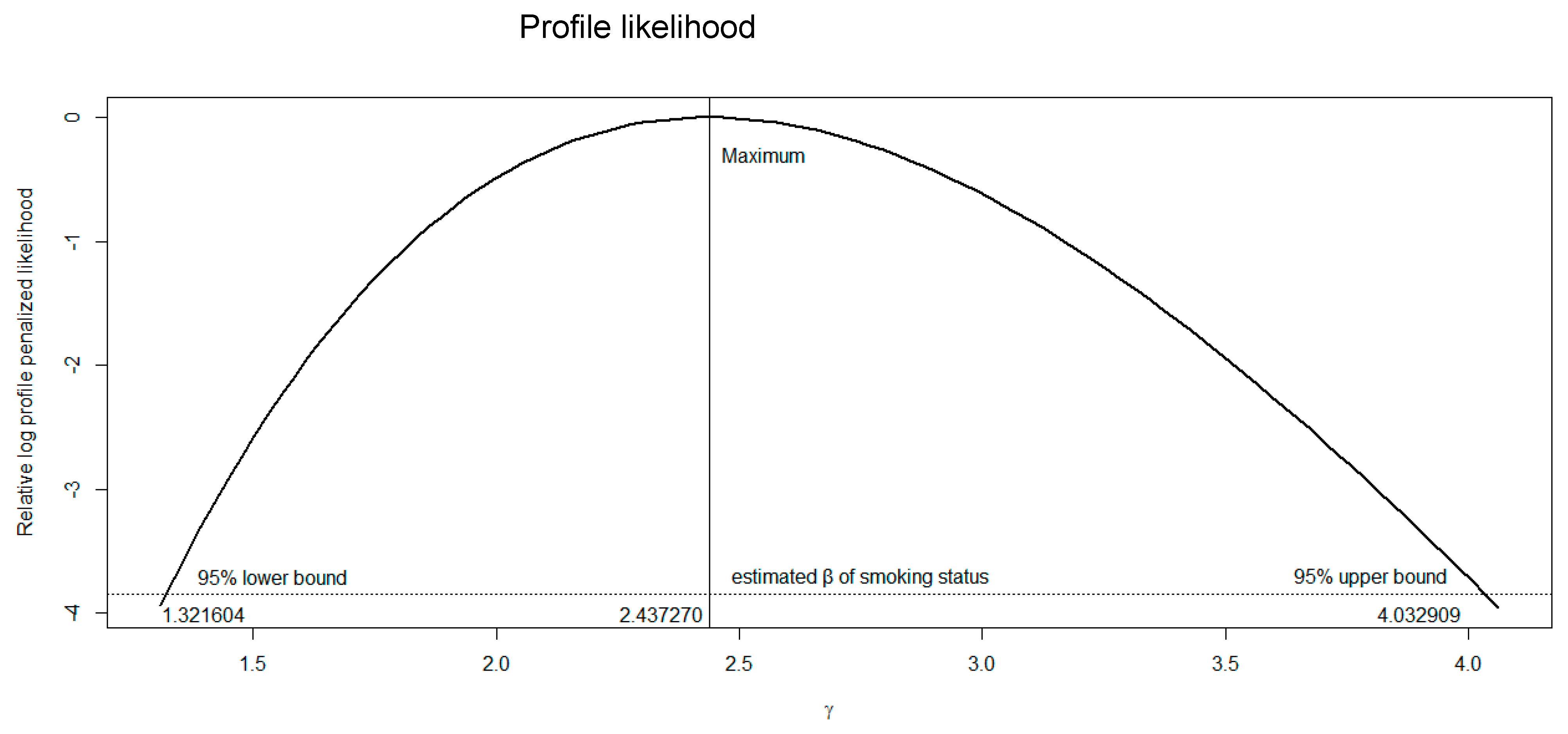Dealing with the Problem of Monotone Likelihood in the Inflation of Estimated Effects in Clinical Studies. Comment on Hasegawa et al. Impact of Blood Type O on Mortality of Sepsis Patients: A Multicenter Retrospective Observational Study. Diagnostics 2020, 10, 826
Funding
Data Availability Statement
Conflicts of Interest
References
- Hasegawa, D.; Nishida, K.; Kawaji, T.; Hara, Y.; Shimomura, Y.; Moriyama, K.; Niimi, D.; Kuriyama, N.; Shintani, A.; Komura, H.; et al. Impact of Blood Type O on Mortality of Sepsis Patients: A Multicenter Retrospective Observational Study. Diagnostics 2020, 10, 826. [Google Scholar] [CrossRef] [PubMed]
- Heinze, G.; Schemper, M. A solution to the problem of monotone likelihood in Cox regression. Biometrics 2001, 57, 114–119. [Google Scholar] [CrossRef] [PubMed]
- Heinze, G.; Ploner, M. SAS and SPLUS programs to perform Cox regression without convergence problems. Comput. Methods Programs Biomed. 2002, 67, 217–223. [Google Scholar] [CrossRef]
- Doll, R.; Hill, A.B. Smoking and carcinoma of the lung; preliminary report. Br. Med. J. 1950, 2, 739–748. [Google Scholar] [CrossRef] [PubMed]
- Heinze, G.; Ploner, M.; Jiricka, L. Logistf: Firth’s Bias-Reduced Logistic Regression; R Package Version 1.24; CRAN: Vienna, Austria, 2020. [Google Scholar]
- Tsiatis, A.A. A large sample study of Cox’s regression model. Ann. Stat. 1981, 9, 93–108. [Google Scholar] [CrossRef]
- Albert, A.; Anderson, J. On the existence of maximum likelihood estimates in logistic regression models. Biometrika 1984, 71, 1–10. [Google Scholar] [CrossRef]

Publisher’s Note: MDPI stays neutral with regard to jurisdictional claims in published maps and institutional affiliations. |
© 2022 by the author. Licensee MDPI, Basel, Switzerland. This article is an open access article distributed under the terms and conditions of the Creative Commons Attribution (CC BY) license (https://creativecommons.org/licenses/by/4.0/).
Share and Cite
Tzeng, I.-S. Dealing with the Problem of Monotone Likelihood in the Inflation of Estimated Effects in Clinical Studies. Comment on Hasegawa et al. Impact of Blood Type O on Mortality of Sepsis Patients: A Multicenter Retrospective Observational Study. Diagnostics 2020, 10, 826. Diagnostics 2022, 12, 2295. https://doi.org/10.3390/diagnostics12102295
Tzeng I-S. Dealing with the Problem of Monotone Likelihood in the Inflation of Estimated Effects in Clinical Studies. Comment on Hasegawa et al. Impact of Blood Type O on Mortality of Sepsis Patients: A Multicenter Retrospective Observational Study. Diagnostics 2020, 10, 826. Diagnostics. 2022; 12(10):2295. https://doi.org/10.3390/diagnostics12102295
Chicago/Turabian StyleTzeng, I-Shiang. 2022. "Dealing with the Problem of Monotone Likelihood in the Inflation of Estimated Effects in Clinical Studies. Comment on Hasegawa et al. Impact of Blood Type O on Mortality of Sepsis Patients: A Multicenter Retrospective Observational Study. Diagnostics 2020, 10, 826" Diagnostics 12, no. 10: 2295. https://doi.org/10.3390/diagnostics12102295
APA StyleTzeng, I.-S. (2022). Dealing with the Problem of Monotone Likelihood in the Inflation of Estimated Effects in Clinical Studies. Comment on Hasegawa et al. Impact of Blood Type O on Mortality of Sepsis Patients: A Multicenter Retrospective Observational Study. Diagnostics 2020, 10, 826. Diagnostics, 12(10), 2295. https://doi.org/10.3390/diagnostics12102295





